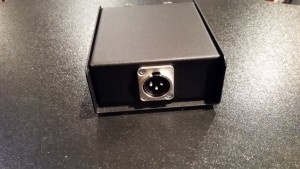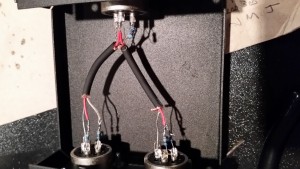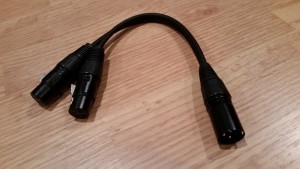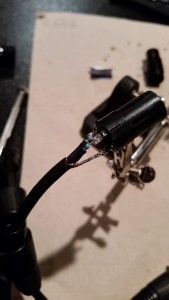Balanced Line-Level Stereo to Mono Summing Box

One of my most popular blog posts has been The Stereo to Mono Summing Cable that No One Makes. I get contacted pretty much on a weekly basis from someone who wants to buy or build that cable to connect their iPod, phone, laptop, etc. to their PA system. I decided to take the concept a step further and build a balanced, line-level stereo to mono summing box. Just like the mono-summing cable, it appears that there aren’t any readily-available, off-the-shelf products that do exactly what this box does. There are some mic combiners (e.g., Galaxy Audio’s JIB/C) that are made for connecting two microphones to a single input, but those use much lower-value resistors, making them unsuitable for line-level signals (I even contacted Galaxy about the JIB/C, and that’s what they told me).

Here are a few examples where such a mono-summing box would come in handy:
• You only have one channel input available on your mixer and need to connect a balanced, line-level stereo source to it.
• You need to sum the left and right stereo outputs of a mixer to connect to a single amplifier input for a mono PA system.
• You need to sum a stereo signal to mono for connecting it to one or more subwoofers (low frequencies are omnidirectional, so it’s generally desirable to send a summed mono signal to your subwoofer/s).
• You need to connect the stereo outputs of a studio monitor volume controller to a single active monitor (“grot box”) such as an Auratone, Avantone Mix Cube, Behritone, etc., to test your mix for mono compatibility. This is the primary way in which I intend to use the box in my own recording studio.
This build is slightly more complicated than the regular mono-summing cable. First off, it’s for balanced connections, so you have to solder a resistor (470 Ohm, 1%) into the path of each signal conductor (left +, left -, right +, right -), and there’s also a shunt resistor (20k Ohm 1%) that gets installed across pins 2 and 3 at the output connector. It also requires more parts (two female and one male panel-mount XLR jacks and a box to mount them in), making it slightly more expensive to build. But it’s still a fairly simple project.
More recently, I’ve started building these into an XLR y-cable format with the resistors inside the connectors. The internal wiring is the same, but this reduces the cost significantly, since the steel box and the panel-mount XLR’s made up the largest part of the expense of the box format. This also require less cabling, since you can plug the y-cable straight into the balanced outputs of your first device and connect a single XLR cable to the male plug of the y-cable for connection to the input of the next device.
Links:
• Micmodkits.com – my website where you can order a cable like the one described here.
• My original article about stereo to mono summing.
• My Ebay listings, where I keep cables and other items of interest up for sale.
• Contact me, if you have questions or need other help.
• Why Not Wye?
• The Magic Cable

 April 20, 2018
|
Posted by Jon (admin)
April 20, 2018
|
Posted by Jon (admin)



 Categories:
Categories:  Tags:
Tags: 